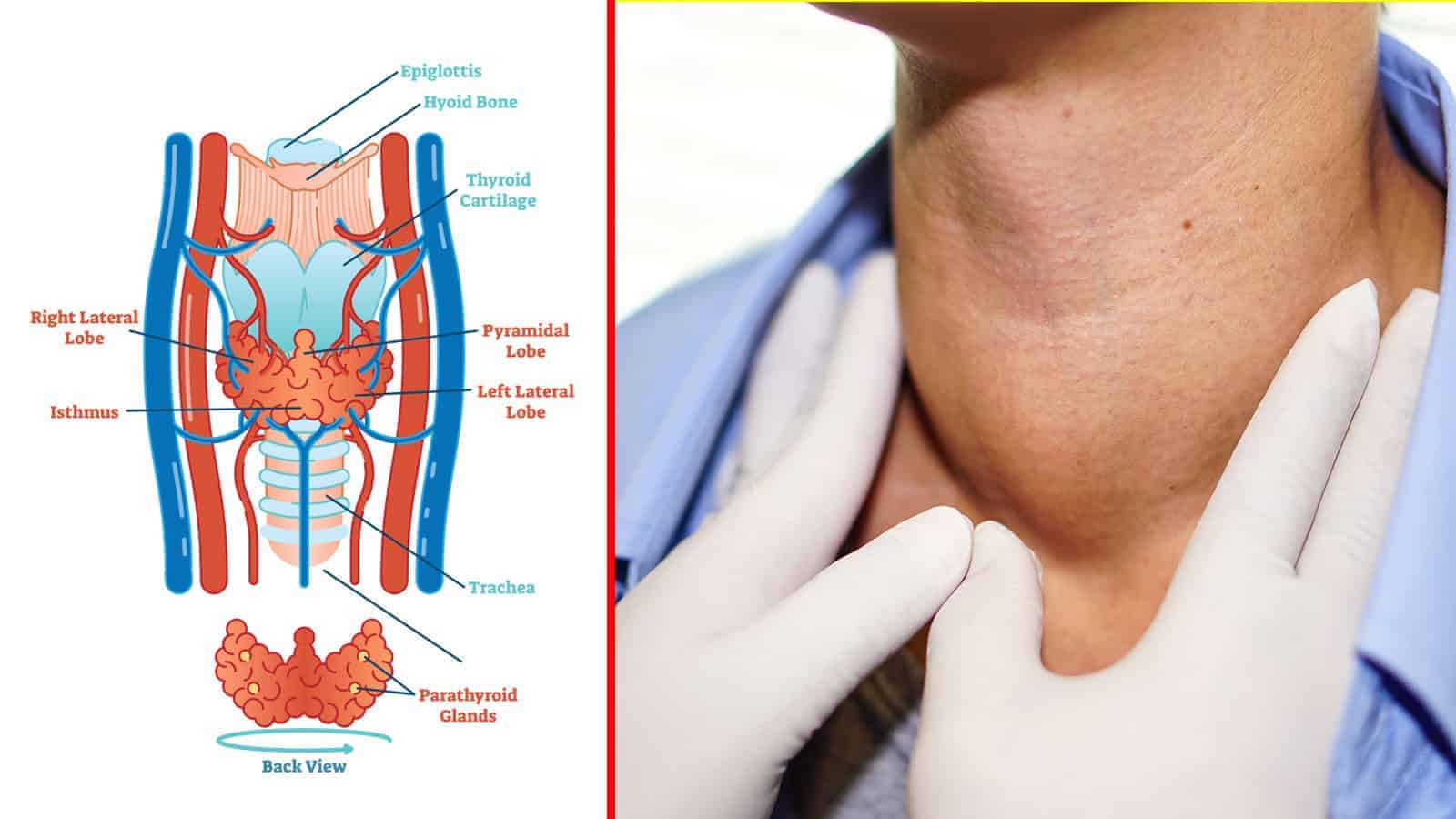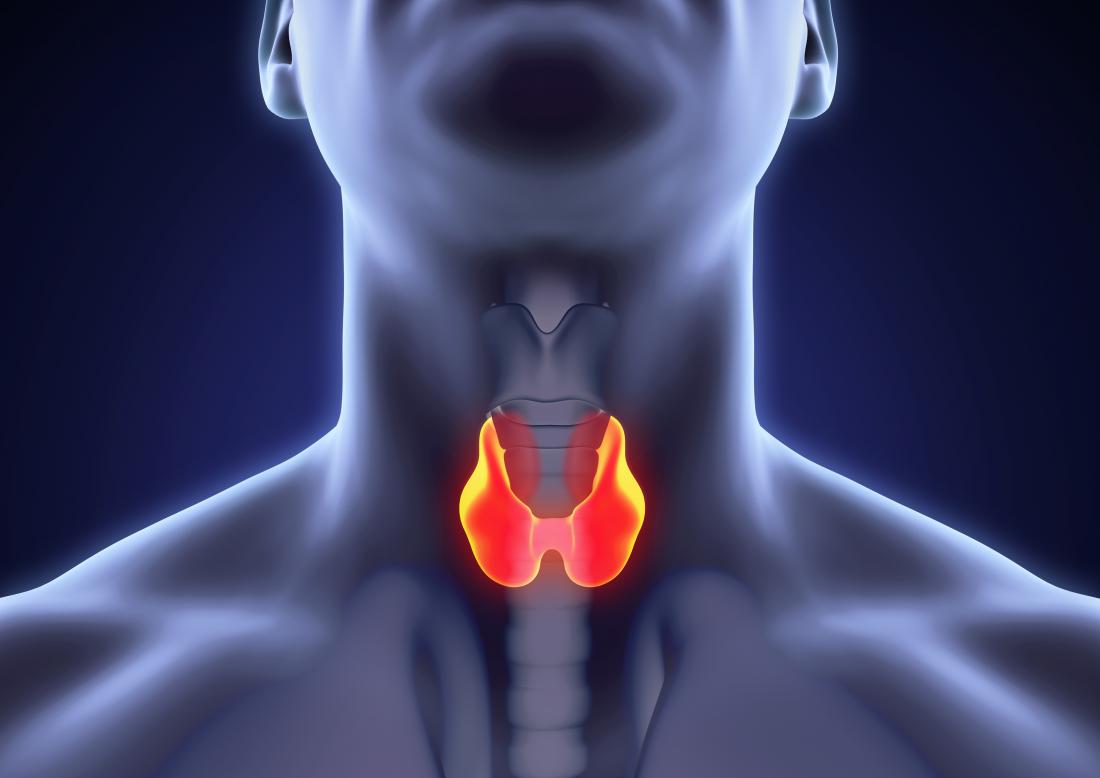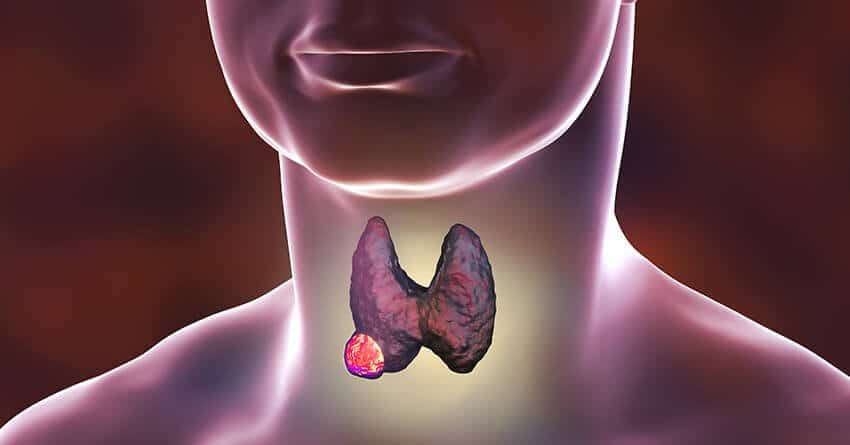Treatments For Thyroid Cancer
Treatment for thyroid cancer depends on the type of thyroid cancer you have and how far it has spread.
The main treatments are:
- surgery to remove part or all of the thyroid
- radioactive iodine treatment you swallow a radioactive substance that travels through your blood and kills the cancer cells
- external radiotherapy a machine is used to direct beams of radiation at the cancer cells to kill them
- chemotherapy and targeted therapies medicines used to kill cancer cells
After treatment, you’ll have follow-up appointments to check whether the cancer has come back.
Read more about how thyroid cancer is treated.
Thyroid Cancer: Common In Women
Thyroid disorders are more common in women, probably due to the roles of hormones, which are different in femalesthan in males.
Thyroid nodules, Russell says, affect up to 80 percent of women, but only 5percent to 15 percent of those lumps and bumps are malignant. Bettertesting means thyroid tumors are on the rise, he notes, saying that itsprojected to become the third most common cancer.
Malignant and cancer are scary words, but Russell says that mostthyroid cancer is highly treatable, even when the cancer cells spread tonearby lymph nodes, which occurs frequently.
With thyroid cancer we talk about prognosis in terms of 20-year survivalinstead of five years, as we do with most other cancers. Its usually aslow-moving disease. Theres a 98 to 99 percent survival rate at 20 years,he says.
We treat it almost like a chronic condition where the patient getstreatment and visits her doctor regularly for follow-up.
What About Other Treatments I Hear About
When you have cancer you might hear about other ways to treat the cancer or treat your symptoms. These may not always be standard medical treatments. These treatments may be vitamins, herbs, special diets, and other things. You may wonder about these treatments.
Some of these are known to help, but many have not been tested. Some have been shown not to help. A few have even been found to be harmful. Talk to your doctor about anything youre thinking about using, whether its a vitamin, a diet, or anything else.
Thyroid Cancer Awareness Month September 2022
This post may contain affiliate links, to find out more information, please read my disclosure statement. As an Amazon Associate I earn from qualifying purchases.
Every year, September is Thyroid Cancer Awareness Month!
This annual event was created to spread awareness of the symptoms and effects of thyroid cancer and the importance of early diagnosis and treatment. There are a lot of misconceptions surrounding thyroid disease, and thyroid cancer is no different!
No, it is not the good cancer.
Thyroid Cancer: What Women Should Know

The symptoms start slowly. Fatigue is the most common. There might bechanges in hair, nails or skin, and other vague complaints that could becaused by aging, diet, stress or dozens of other factors.
Women in the prime of their lives, busy with work and families, may noteven notice. When a doctor finally diagnoses an underactivethyroiddue to cancer, it often comes as a shock.
Jonathon Russell, M.D., assistant professor ofOtolaryngology Head and Neck Surgeryat The Johns Hopkins Hospital, says, Typicalthyroid cancerpatients are women between the ages of 30 and 60younger than many peoplewould think. Theyre likely to put off getting seen by a doctor and mayblame their symptoms on other causes.
What Is Thyroid Cancer
Thyroid cancer starts in the cells of the thyroid. A cancerous tumour is a group of cancer cells that can grow into nearby tissue and destroy it. The tumour can also spread to other parts of the body.
The thyroid is part of the endocrine system. It is a small gland in the front of the neck below the larynx and near the trachea . It has a right and left lobe, one on each side of the trachea. The lobes are joined by a thin piece of tissue called the isthmus.
Cells in the thyroid sometimes change and no longer grow or behave normally. These changes can lead to non-cancerous conditions such as hypothyroidism, hyperthyroidism, thyroid nodules or goitre.
Sometimes changes to thyroid cells can cause cancer. The most common type of thyroid cancer is papillary thyroid cancer. Follicular thyroid cancer is the second most common type, but it develops much less often than papillary thyroid cancer. Medullary and anaplastic thyroid cancers can also develop, but they are less common.
Other very rare types of cancer can also start in the thyroid gland, including non-Hodgkin lymphoma and soft tissue sarcoma.
Lumps Caused By Thyroid Cancer
As mentioned above, thyroid cancer commonly causes a lump to develop in the neck. These lumps typically form near the base of the neck, above the breastbone , and its common for them to be painless and to quickly grow in size. While the thyroid gland usually isnt palpable, when a nodule forms, the lump can often be felt through the skin on the neck, and in some cases is even visible. Oftentimes, the lump will feel noticeably firmer than the tissue surrounding it.
Its a smart ideaespecially if you have risk factors for thyroid cancerto familiarize yourself with how your neck normally feels, and then continue checking your neck on a regular basis for any signs of an abnormality. To check for a thyroid lump, you should:
- Sit or stand up straight
- Ensure that your neck muscles are relaxed
- Tip your head backward and swallow
- Lightly palpate the area surrounding your thyroid gland while doing so to see whether you can feel any lumps or signs of asymmetry
Its important to remember that the presence of a lump in the neck doesnt necessarily indicate thyroid cancer. In fact, the strong majority of thyroid nodules are benign, with less than 5% being cancerous. Nonetheless, a lump near the thyroid gland should never be overlooked. Upon discovering a lump in the neck, its important to promptly consult with a trained medical professional who can diagnose the cause and confirm whether the lump is cancerous.
What Is The Thyroid Gland
The thyroid gland is a butterfly-shaped endocrine gland that is normally located in the lower front of the neck. The thyroids job is to make thyroid hormones, which are secreted into the blood and then carried to every tissue in the body. Thyroid hormone helps the body use energy, stay warm and keep the brain, heart, muscles, and other organs working as they should.
Treatment Of Advanced Thyroid Cancer
Thyroid cancer that spreads outside the neck area is rare but can be a serious problem. Surgery and radioactive iodine remain the best way to treat such cancers as long as these treatments continue to work. However, for more advanced cancers, or when radioactive iodine therapy is no longer effective, other forms of treatment are needed.
Medications have now been approved for the treatment of advanced thyroid cancer. These drugs rarely cure advanced cancers that have spread widely throughout the body, but they can slow down or partially reverse the growth of the cancer. These treatments are usually given by an oncologist and often require care at a regional or university medical center. These agents can also be used to change a tumor that stopped responding to radioactive iodine to respond to this treatment again. This is called redifferentiation therapy.
External beam radiation directs precisely focused X-rays to areas that need to be treated. This may be tumor that has recurred locally in the neck or spread to bones or other organs. This can kill or slow the growth of those tumors.
What Causes Thyroid Cancer
In most cases, the cause of thyroid cancer is unknown. However, certain things can increase your chances of developing the condition.
Risk factors for thyroid cancer include:
- having a benign thyroid condition
- having a family history of thyroid cancer
- having a bowel condition known as familial adenomatous polyposis
- acromegaly a rare condition where the body produces too much growth hormone
- having a previous benign breast condition
- weight and height
Read more about the causes of thyroid cancer
Pattern And Localization Of Metastases
Skip metastases showed most frequently Level II metastases and less usually Level III, IV and V metastases. The PTC skip metastases showed a very high number of single-level metastases in the lateral compartment more rarely triple-and quadruple-level metastases .
According to Park the group with skip metastases had an inferior number of metastases of lateral nodes probably because these were found more frequently at a single level . In the group with skip metastases, these were found more frequently at levels III or II, a single cervical level and only a single node were involved. In support of the pathophysiologic hypothesis concerning the role of lymphatic drainage running close the superior thyroid artery, the levels III and II were most frequently involved in patients with skip metastases, so primary tumor located in upper pole tends to metastasize to upper levels rather than to the others levels.
How To Spot Thyroid Cancer
Some people with thyroid cancer do not seem to develop any symptoms, whereas others may notice they have a goitre or enlarged thyroid gland.
Physical symptoms can include:
- A pain in the neck
- A hoarse voice
See Also: Thyroid Patients Explain Their Signs of Thyroid Cancer
Remember, if you suspect anything suspicious or indicative of thyroid cancer or any complications of your health, always get to a doctor as soon as possible for examination.
Checking your neck for goitres, nodules and abnormalities is important to do so you can get appropriate treatment as soon as possible.
Outlook For Thyroid Cancer

Around 9 in every 10 people are alive 5 years after a diagnosis of thyroid cancer. Many of these are cured and will have a normal lifespan.
But the outlook varies depending on the type of thyroid cancer and how early it was diagnosed. At present the outlook is:
- more than 9 in 10 people with papillary carcinoma live at least 5 years after diagnosis
- more than 9 in 10 people with follicular carcinoma live at least 5 years after diagnosis
- more than 7 in 10 men, and around 9 in 10 women with medullary thyroid carcinoma live at least 5 years after diagnosis
- around 1 in 10 people with anaplastic thyroid carcinoma live at least 5 years after diagnosis
Up to 1 in 4 people treated for thyroid cancer are later diagnosed with cancer in another part of the body, such as the lungs or bones, but cancer can often be treated again if this happens.
Page last reviewed: 28 August 2019 Next review due: 28 August 2022
What Else To Watch For
As thyroid cancer gets more advanced, you might notice symptoms like:
- Lump or swelling in your neck that’s especially fast-growing
- Pain at the front of your neck or moving up to your ears
- Constant cough or hoarseness, with no obvious cause
- Trouble breathing or swallowing
These could suggest a number of different illnesses besides thyroid cancer, so talk to your doctor about all your symptoms.
Symptoms Of Thyroid Cancer You Shouldnt Ignore Aarp
- www.aarp.org
- Highest rating: 3
- Low rated: 1
- Summary: What to know about 4 symptoms that could signal this type of highly curable cancer · 1. A lump or swelling in your neck · 2. Trouble swallowing · 3. Hoarseness
See Details
- Highest rating: 4
- Low rated: 3
- Summary: Symptoms of thyroid cancer · a painless lump or swelling in the front of the neck although only 1 in 20 neck lumps are cancer · swollen glands in the neck
See Details
How To Check Your Neck:
For info on goitres, nodules and enlargement, see here.
How Many Thyroid Cancers Are There
There are four types of thyroid cancers, and they arise from the two main types of thyroid cells-follicle and C cells. Papillary and follicular thyroid cancers are the most common types and have a high cure rate with proper treatment, which generally includes thyroidectomy and radioactive iodine therapy. Medullary and anaplastic thyroid cancers have a poorer prognosis because, unlike the first two, they are faster growing and tend to be found only after they have spread beyond the thyroid to lymph nodes in the neck and other organs.4 According to the NCI, of the thyroid cancers diagnosed in the United States, 80 percent are papillary, 15 percent are follicular, 3 percent are medullary, and 2 percent are anaplastic.2
Are Thyroid Cancer Painful
Thyroid cancer often causes a painless lump or swelling in the lower part of the front of the neck. However, neck lumps are common and are usually caused by a less serious condition, such as an enlarged thyroid . There are several types of thyroid cancer. Most types grow slowly, although some types can be very aggressive.
Most thyroid cancers can be cured with treatment. The main symptom of thyroid cancer is a lump or swelling in the front of the neck, just below the Adam’s apple, which is usually painless. Thyroid cancer is generally very treatable, even if it has a more advanced stage. This is because there are effective treatments that give you a great chance to fully recover.
And surgery, when necessary, can sometimes cure it. The thyroid gland is located in the lower front of the neck, below the larynx located in the upper part of the neck and above the collarbones. Thyroid cancer usually appears as a painless lump in this area. In most cases, the lump affects only one side and the results of thyroid function tests are usually normal.
It’s common for people with thyroid cancer to have few or no symptoms or signs. A symptom is something that only the person experiencing it can identify and describe, such as fatigue, nausea, or pain. A sign is something that other people can identify and measure, such as fever, rash, or high pulse. Together, signs and symptoms can help describe a medical problem.
What Kind Of Treatment Will I Need
There are many ways to treat thyroid cancer but surgery is the main treatment. The treatment plan thats best for you will depend on:
- The stage of the cancer
- The chance that a type of treatment will cure the cancer or help in some way
- Other health problems you have
- Your feelings about the treatment and the side effects that come with it
Depending on the type and stage of your thyroid cancer, you may need more than 1 type of treatment.
How Is Thyroid Cancer Diagnosed
If your doctor suspects from your physical exam and ultrasound that you may have cancer, you will need to have a fine needle aspiration biopsy. The results of the biopsy can be highly suggestive of thyroid cancer and will prompt surgical treatment. Thyroid cancer can only be diagnosed with certainty after the nodule is removed surgically . Thyroid nodules are very common, but less than 1 in 10 will be a thyroid cancer.
How Does Thyroid Cancer Affect Pregnancy

Thyroid cancer is the second most common cancer diagnosed in pregnant women . Approximately 10% of thyroid cancers develop during pregnancy or within the first year after childbirth. Experts believe fluctuating hormone levels during pregnancy may trigger the cancer.
If you receive a thyroid cancer diagnosis during pregnancy, your healthcare provider can discuss treatment options. Depending on the cancer type and severity, your provider may recommend delaying treatment until after you deliver your baby. If treatment cant wait, most women can safely undergo surgery to remove the cancerous gland. You shouldnt have radioactive diagnostic tests or treatments when youre pregnant or breastfeeding.
How Can I Help Spread Awareness
This Thyroid Cancer Awareness Month, you can share posts and articles such as this one, as well as images that help spread awareness of Thyroid Cancer. You may also wish to share your own experience and journey with thyroid cancer to highlight the importance of awareness.
Talking about thyroid cancer with friends and family and informing them of the signs and symptoms can be a good idea, as well as showing support by donating to or supporting thyroid charities and advocacies that push for further awareness and research.
There are celebrities and those in the public eye who have been diagnosed and treated for thyroid cancer. These include musician Rod Stewart, actress Sofia Vergara, Argentinian president Cristina Fernandez de Kirchner and the band CHIMAIRAs frontman, Mark Hunter.
How Can I Reduce My Risk Of Developing Head And Neck Cancers
People who are at risk of head and neck cancersparticularly those who use tobaccoshould talk with their doctor about ways to stop using tobacco to reduce their risk.
Avoiding oral HPV infection can reduce the risk of HPV-associated head and neck cancers. In June 2020, the Food and Drug Administration granted accelerated approval of the HPV vaccine Gardasil 9 for the prevention of oropharyngeal and other head and neck cancers caused by HPV types 16, 18, 31, 33, 45, 52, and 58 in persons aged 9 through 45 years. More information about these vaccines is available in the Human Papillomavirus Vaccines fact sheet.
Although there is no standard or routine screening test for head and neck cancers, dentists may check the oral cavity for signs of cancer during a routine checkup.